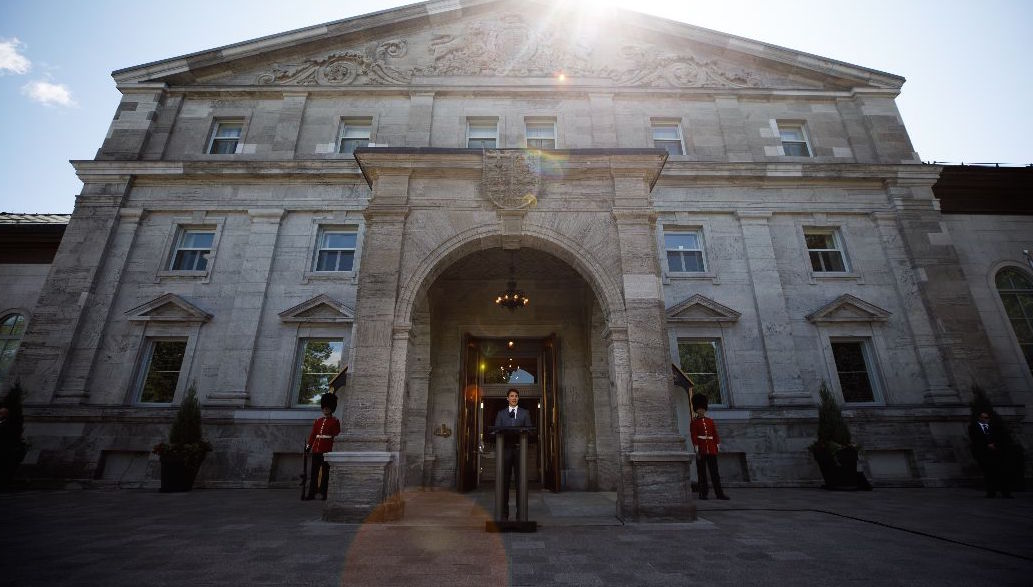Whether Liberal or Conservative in name, once in government, both parties have regularly adopted each other’s main policies.
Take the current Liberal Party of Canada for example. Justin Trudeau chose Bill Morneau as finance minister, an employer pension fund consultant and the former chair of the big business think-tank, the C.D. Howe Institute. A textbook Blue Grit, Morneau could just as easily have joined the Conservatives. On his tour of duty Liberals are busy negotiating bilateral trade deals, promoting oil and gas exports, and adopting Harper-era climate change targets.
Overall, economic policy under Trudeau is hard to distinguish from what the Harper Conservatives were up to.
The party of Canadian Confederation was formally called the Liberal-Conservative Party and it kept that name until 1873 and took it again from 1922 to 1938. It was headed by John A. Macdonald, who is today vilified for his ideas and policies towards Indigenous peoples. In his time Macdonald, working with his colleague George-Étienne Cartier, was considered astute given his ability to bring political groups of diverse backgrounds together.
There are significant historical differences between Canadian Conservatives and their Liberal adversaries. Conservatives traditionally respected tradition and valued history. Tory ministers worked to maintain links with the United Kingdom. The Liberals felt less bound by what went before, and privileged the future over the past. Liberals and their advisers have focused on the U.S. for inspiration and guidance.
It was Brian Mulroney, elected in 1984, who jettisoned the old Tory pro-U.K. foreign policy favoured by John Diefenbaker. The Conservative PM switched from being against the Liberal Holy Grail — free trade with the U.S. — as a leadership candidate, to championing it as prime minister. Policies adopted by his government were similar to those pushed by postwar big business Liberals such as C.D. Howe, starting with putting out a big welcome mat for U.S. investment.
The least popular PM in recent history by most accounts, Mulroney remained loyal to the Crown and other Conservative symbols, and did manage to modernize Conservative thinking to include environmental activism (an acid rain treaty with the U.S.), protection for the French-language minority in Manitoba, and opposition to South African apartheid.
Chased from politics by renegade Quebec Conservative Lucien Bouchard who joined with Liberal MPs to form the Bloc Québecois and Alberta Conservatives like Stephen Harper who defected to form the Reform Party, Mulroney can nonetheless be credited with bringing the Liberal-Conservative party idea up to date over his two majority governments (1984-88 and 1988-1993).
Mulroney was succeeded by Jean Chrétien who expanded upon the big business liberalism agenda implemented by the Progressive Conservative Mulroney.
In an attempt to forestall the recovery of the Tories after they were reduced to two seats in the 1993 general election, Chrétien and his finance minister Paul Martin Jr. took their lead on economic policy from the Reform Party, which inherited the Conservative seats in Western Canada. The Liberals first launched a sneak attack on the social welfare state championed by social Liberal Paul Martin Sr., and then followed up with massive tax breaks for corporations and income tax reductions for wealthy Canadians.
Stalking the Liberals, Stephen Harper engineered a merger of the Canadian Alliance (the successor to the Reform Party) with the remnants of the former Progressive Conservative party. By the time Harper took office, the major initiatives he had been plotting had already been introduced by Chrétien.
Indeed Harper’s conservative inclinations on fiscal policy came afoul of the world financial crisis of 2008, and his minority government was forced to adopt liberal simulative spending by the Liberal and NDP opposition.
A plan by Liberal Leader Stéphane Dion to form a coalition government with the NDP was thwarted by Liberals insiders who preferred to support a Conservative government rather than join the NDP and the Bloc in voting non-confidence in Harper.
Dion himself was forced out as leader for not understanding what was on the agenda in Ottawa following the financial crisis: a silent coalition between Liberals and Conservatives.
Harper had to acknowledge victories by the Liberals in authorizing same-sex marriage and securing abortion on demand, policies his social conservative supporters abhorred. His determination to pursue a right-wing ideological agenda eventually got Harper in trouble. The Supreme Court blocked initiatives, and nonsensical projects like abandoning the census lost him support.
Runner-up in the most recent Conservative leadership race Maxime Bernier just left his party because it is not true to conservative ideas, while last week an Ontario Liberal MP crossed the floor to the Conservatives without anyone thinking she had to give policy-related reasons for doing so.
With an election in just over a year both Liberals and Conservatives will be looking to differentiate themselves from each other. If the Conservatives try too hard to push right, they are likely to lose support. If the Liberals are judged to be too much like the Conservatives, they could lose government.
In either event, the likely outcome is a Liberal-Conservative government.
Duncan Cameron is president emeritus of rabble.ca and writes a weekly column on politics and current affairs.
Photo: Adam Scotti/PMO
Help make rabble sustainable. Please consider supporting our work with a monthly donation. Support rabble.ca today for as little as $1 per month!




